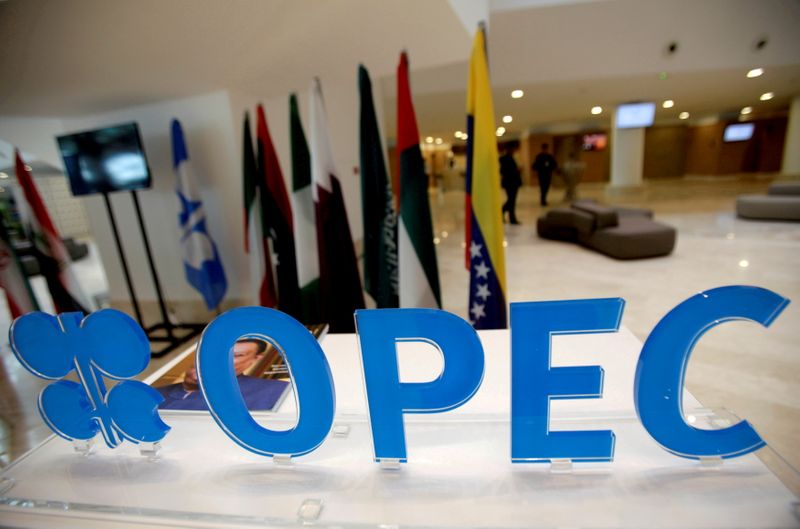By Alex Lawler
LONDON (Reuters) - The gamble taken by OPEC and its allies, under pressure from top oil consumer the United States, to raise oil output in January despite its own forecasts of oversupply, appears to be paying off as prices stabilise.
Oil has steadied around $75 a barrel as market participants brush off concerns of a glut, in part because they don't believe the Organization of Petroleum Exporting Countries and its allies can reach their new output target and demand is still expected to rise.
Heading into its Dec. 2 meeting, OPEC+ had every reason to lower supply. A U.S.-led release of oil from strategic stocks was set to increase the surplus. Oil fell 10% on Nov. 26 when reports of the new coronavirus variant emerged and below $66 on the day of the meeting.
But OPEC+ stuck to its guns and went ahead with the nominal monthly increase of 400,000 barrels per day, taking a view that demand would not be severely hit. Oil's rise since has added to OPEC confidence that there won't be a major demand shock.
"The market has taken the decision well," said an OPEC delegate. "The variant news made for short-lived negative sentiment, with no clear evidence."
While a new round of movement restrictions as a result of the Omicron variant threatens to impact demand, there has not been a return to the strict limits on travel seen during earlier waves of the pandemic.
At the same time OPEC+, which has been unwinding last year's record output curbs through monthly increases, has been under-delivering on the pledges due to a lack of capacity to pump more in some of the alliance's producers.
"The bottom line: everything is good when Brent is quoted at around $75," said a Russian OPEC+ source.
Prices could head even higher in 2022, according to Christyan Malek and other analysts at JP Morgan, who think OPEC+ will struggle to add 250,000 bpd a month and forecast $125 oil next year in a Nov. 29 note.
U.S. WELCOMES DECISION
The decision to hike output was good for big oil consumers, which have been urging OPEC+ to do more to lower prices. The White House, which has lobbied for more oil, welcomed the OPEC+ decision to increase output.
In the days leading up to and following the Dec. 2 meeting, OPEC had a number of meetings with representatives of consumer nations. A U.S. delegation met with a number of UAE and Saudi officials, as well as from non-OPEC Qatar.
OPEC Secretary General Mohammad Barkindo and others held a meeting on Dec. 3 with Chinese officials, an OPEC source said, adding it was a "positive" meeting and came a day after the OPEC+ decision to stick to planned output increases.
OPEC officials deny that their decisions had anything to do with consumer pressure. A White House spokesperson said: "The delegation meetings were not related to the OPEC+ meetings and that was not the purpose of the trip," which focused on a range of economic issues.
Neil Atkinson, a veteran oil analyst and former senior official at the International Energy Agency, said the OPEC+ decision was good for both producers and consumers.

He said the actual OPEC+ increase was likely to be less than 400,000 bpd, so was unlikely to amplify the surplus of oil expected in the first quarter, and it was hard to see a return to the intensity of earlier lockdowns.
"I doubt there will be a major demand shock," he said. "OPEC+ did the right thing. Thus far, they have added barrels carefully as demand has recovered and prices have recovered to levels that are a fair balance."